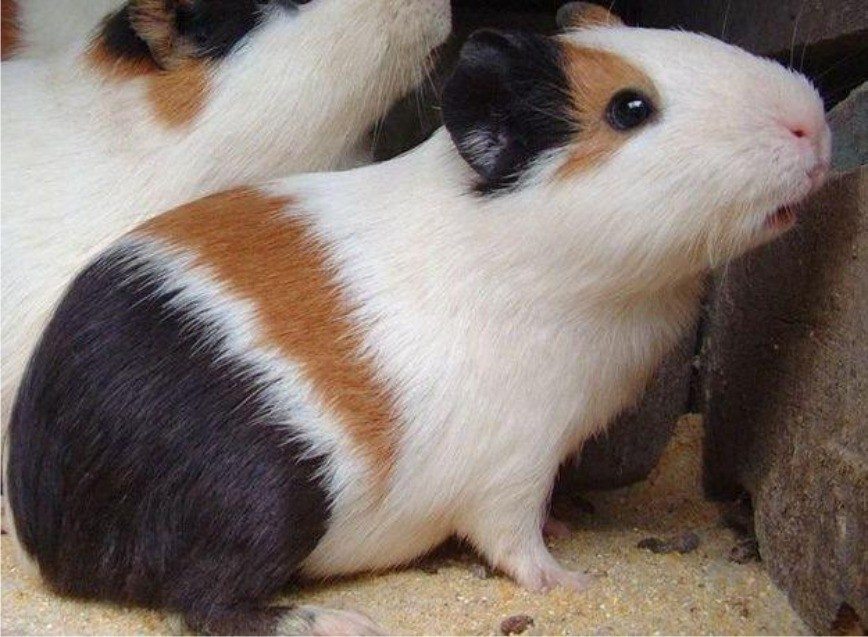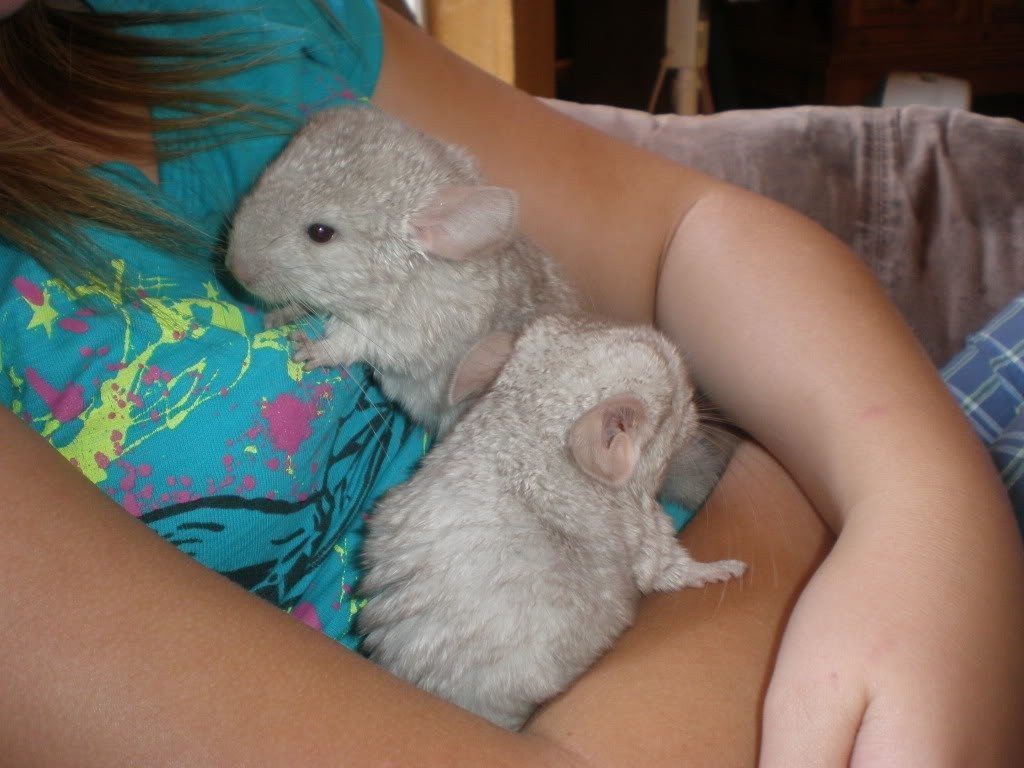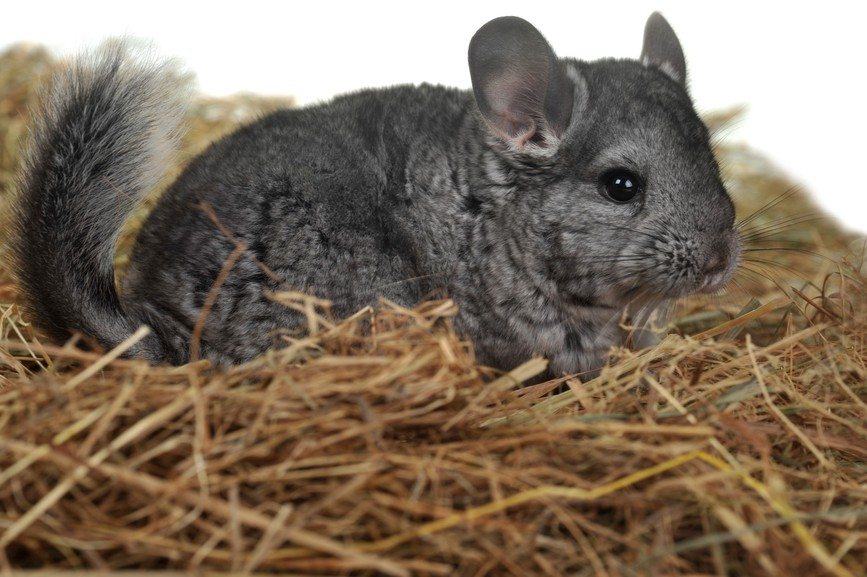Some of the cutest little bundles of fluff around (but nevertheless with very sharp teeth), chinchillas have the most gorgeous dense, soft coats – for which they paid dearly in the days of real fur coats – and make very good pets. Here are a few more interesting facts about Chinchillas
General Facts about Chinchillas
1 – Chinchillas are large nocturnal rodents that are crepuscular (most active around dawn and dusk). They are usually about 10-14 in (25-35 cm) long with another 5-6 in (12-15 cm) of tail, and weigh around 2-3 lbs (0.9-1.3 kg).
See Also: 20 Interesting Facts about Anteater
2 – Chinchillas are native to the South American Andes mountains, now only in Peru and Chile but historically also in Bolivia. They are highly sociable creatures that dislikes living alone – their colonies consist of 100 or more animals and are, in the wild, found only at high altitudes, up to 15,000 ft (4,270 m).

3 – Because Chinchillas are adapted to living so high, their blood has thickened with extra red blood cells so that they can carry more oxygen. They have also developed their signature highly dense and soft coats to cope with the cold, and thick fleshy pads on their paws to help them when climbing the rocks up there.
4 – Chinchillas were named for the Chincha people of the Andes, who wore their fur, and the name means, literally, ‘little Chincha’. The fur comes in a variety of colours, from silver-grey (the only wild colour) to beige, tan, ‘violet’, ‘sapphire’, white and black, and combinations of these.
See Also: 20 Interesting Facts about Amadillo
5 – There are only two species of Chinchilla living, Chinchilla Chinchilla (nearly extinct), which has a shorter tail and ears and thicker neck and shoulders, and Chinchilla Lanigera (still found in the wild but very rare), which is thought to be the variety now found in domestication.
6 – Because chinchilla fur is so dense, it resists attacks by parasites such as fleas, and also has very little loose dander, making them hypoallergenic.
See Also: 20 Interesting Facts About Badger
Behavioural Facts about Chinchillas
7 – Chinchillas are prey animals and because of this they have developed ‘fur slip’, a defence mechanism whereby they can just lose a large patch of their coat when grabbed by a predator, leaving the attacker with nothing but a clump of fur while the chinchilla, hopefully, escapes. They will also spray urine as a defense.
8 – Chinchillas are extremely agile and can jump to enormous heights, up to 1.8 m (6 ft) in one go! That could mean from the floor to your shoulder, or the top of the fridge, just like that …
See Also: 20 Interesting Facts about Bats
9 – These rodents are extremely active and if kept as pets, need lots of toys and space in which to run around and play and, preferably, a chinchilla companion, as they are very sociable. If kept as a sole pet they will become very attached to their humans and need a great deal of attention, which many people would find difficult to maintain.

10 – In order to keep their dense coats in good condition, chinchillas take ‘dust baths’, where they roll around in specially provided baths of fine pumice (ground volcanic rock in the wild). They need these baths several times a week to absorb the oils in their fur and clear out any dirt.
Bonus: Animals of Africa – What You Need to Know
11 – The denseness of their coats also means that they should *never* be bathed in water – the fur won’t dry on its own because the air can’t get in, so the dampness next to the skin simply stays and can cause fur rot or growth of fungal infections. If a chinchilla gets wet it should be towel-dried immediately, finishing with a cool hairdryer to ensure it is dry to the skin without overheating.
12 – Another thing chinchillas *must* have is plenty of things to chew on – like rabbits, their teeth grow continually and, if allowed to overgrow, can become painful and prevent them from eating. Chew toys, pumice stones and pieces of wood are ideal – although not citrus and conifer woods since they have too a content of resin, oils and phenols, which are poisonous to chinchillas. The best woods for this purpose are willow, apple, manzanita, birch or kiln-dried pine.
13 – Being adapted to their cool mountain homes, with no ability to sweat at all and wearing a heavy fur coat at all times, chinchillas overheat very easily; anything over 25ºC (80ºF) could give them heatstroke, so as pets they need to be kept in a cool part of the house. Their only method of getting rid of excess warmth is through pumping blood around their large ears, so if their ears become bright red, it’s a bad sign!
14 – Chinchillas chat to each other with a great variety of vocal noises, such as grunts, barks, squeals and chirps. Their hearing range is similar to ours, so they don’t hear dog whistles or anything else we can’t, although their relatively big ears mean their hearing is rather more sensitive than ours.
15 – Because they are adapted to sleeping in small holes and crevices on cliffs and rocky mountainsides, chinchillas can sleep in literally any position – upside-down, upright, on their sides – you name it!
16 – Chinchillas eat sitting up on their haunches so they can hold the food in their front paws, like hamsters and mice. They don’t eat a lot, and can’t cope with a rich diet because it simply isn’t available in their mountaintop home. As pets, they only need a supply of loose timothy hay and some hay-based pellets – anything more will simply upset their stomachs and make them ill, or even kill them.

Family Chinchilla Facts
17 – Chinchillas can breed at any time and have a long gestation period for their size – 111 days. Because of this the babies, usually twins, are born with their eyes open and already fully furred, ready to cope with the cold on the mountaintops.
18 – These animals are quite long-lived for rodents, living around 16 years or so on average, and it’s by no means unknown for them to live into their early twenties.
Chinchillas and Us
19 – Unsurprisingly, chinchillas were heavily hunted for their spectacular fur, but it could take up to 150 pelts to make a single full-length coat and the reaction against wearing furs came only just in time to prevent the two living species being made extinct. Unfortunately it was too late for a third species, and in fact although it is now against the law to hunt wild chinchilla, illegal hunting still goes on and is likely to make the remaining two species extinct in the wild as well in the near future. This despite the fact that there are farms where domesticated chinchillas are bred for their fur and it is therefore totally unnecessary!
20 – Because the chinchilla hears in almost the same range as humans and its cochlea happens to be similar in size to ours (and fairly easy to get at), these little animals are often kept as models for research involving the auditory system.